We’ve been to all the conferences, heard the keynotes, and have been fed the vision of digital banking for years now. But to really understand the reality of digital banking in Pakistan, Profit decided to sit with three digital bankers at the forefront of this industry: Atyab Tahir, Head of Digital at HBL, Khurram Jamshed, Head of Digital Products at Bank Alfalah, and Omer Salimullah, Head of Open Banking at JS Bank.
Profit: Thank you for joining us. In your opinion, how mature is the digital banking sector in Pakistan? What positive role have regulators, banks and customers played, and what are the challenges in each of these areas?
Khurram Jamshed: I have no qualms in saying we are at a nascent stage. We have done nothing as a banking fraternity. We have done branchless banking, and we call that digital. We have not digitized basic intrinsic needs ie. I need to send and deposit cash, I need to get and receive pay orders, I need to deposit cheques. Can we do this? No. These are basic transactions, and currently we can’t do these seamlessly. We haven’t even done cheque truncation, a process that is becoming obsolete in the world. Scandinavia is cashless and so are entire African countries! Yet we are still doing physical cheques. We have trillions of rupees stuck in the system as we take days fulfilling cheques.
Atyab Tahir: We are in a race to the beginning. We have 33 banks. Smaller banks often look to the bigger banks for leadership, but all of the big banks are still trying to figure out [what to do]. Usually this stage lasts seven years. If you look at it that way, we are in year two. Our regulator is not averse to change – it is averse to not knowing what change could look like, and we [the banks] have not been able to articulate that well. If you show regulators anti-money laundering implications and customer protection and satisfy them in this area, they will help you. Most banks hide behind regulations as an excuse because they do not want change. To protect banks from their inertia, the regulator needs to give a compliance framework that applies to banking sandboxes.
KJ: Sandboxes will have their own sandboxes with their own flavors, and we need that compliance framework around it.
AT: Yes, a central bank sandbox. Regulatory startups may not have the solutions we need, even though they are approved for anti-money laundering customer protection.
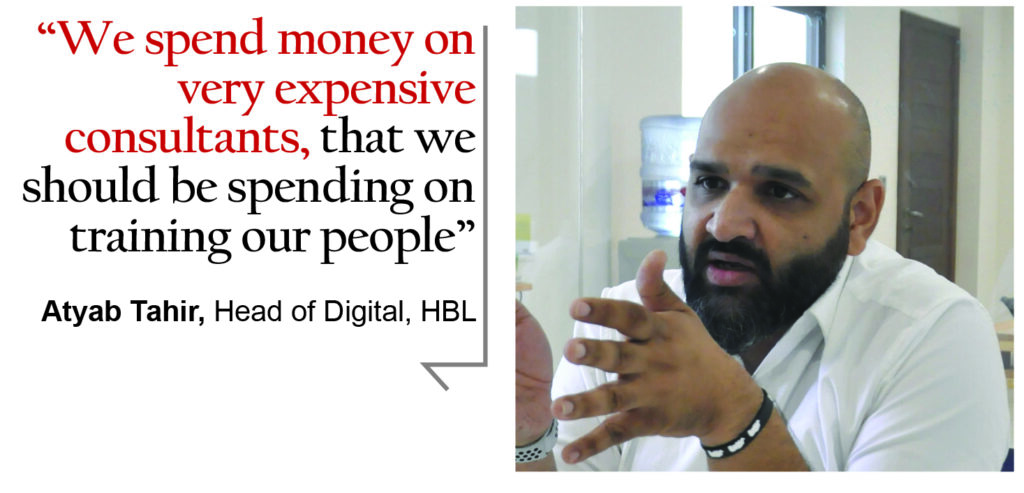
Omer Salimullah: Top banking decision makers do not really believe in digital. They keep digital bankers around to fulfil board pressures to go digital. At their core, they do not believe in digital because it does not bring in the numbers. The branches bring in the numbers, so they believe in that model. Digital is low on their priority. And this is one of the reasons we do not see digital gaining any traction.
KJ: The myth that customers will not do digital because they are not comfortable is just that – it is a myth.
OS: We had $2 billion in operating expenses for banks in the year 2018. Of that, only 7% was spent on IT. Most expenses are salaries and rent. This shows you where the belief is. The silver lining is that 40 million Pakistanis are now on Facebook and their expectations are changing. We are also a young nation. The young want digitization.
KJ: The issue is the return on investment. Right now we open a branch knowing the numbers that will come in. We do “fire and forget”. It is risk free and it works. So we are risk averse. We do not hire people who are aware of the technology needed to take risks.
AT: We have 207 million people in Pakistan, of which 112 million are adults. There are 110 million SIM cards. Almost 60 million SIMS are for smartphones. And 45 million mobile users are daily users. They all use social media. Every board room needs to answer this question – can we exploit this familiarity with technology? What if someone else does?
OS: Experienced bankers often say “if it is not broken, why fix it?” However, banking middle managers like us who are digital-cognizant are scared that banking is so far behind, it will become irrelevant by the time we become decision makers. Change comes very quickly and we are leaving ourselves open for disruption.
KJ: Retail will be the first to get massively digitized. Trade and other use cases like business-to-business will be slower.
Profit: Why do customers hate banking? There is a feeling in certain quarters that banks do retail grudgingly. What’s is your honest take on this, and can digital play a part here?
AT: Digital is not about technology. It’s a tool. Digital is about changing that mindset in a bank. Products traditionally are made by us in conference rooms to satisfy some senior banker. Digital flips that. It asks- what does the customer need? How do they live their life? How can I facilitate that life? That is what digital is. So if you do digital you should delight customers, like N26 and Monzo in Europe. We should be able to customize payment needs for customers on their terms. Digital allows that.
OS: Monzo got investment from its own customers. That is how much customers believed in their digital bank! When you start looking at life through customer’s eyes, the answer is digital.
AT: Why do customers hate banking? Here’s just one use case where we don’t help. A big chunk of our customers are small to medium enterprises (SME), or related to SME. This is a huge unserved category, but banks do not have enough data points to give them loans. We need to modify our approach to serve them. We need to change our lens from lending to facilitation.
KJ: Female inclusion in banking is pathetic. Women in our society do not want to go the branch for societal reasons. They do not feel as safe, for example. They need money to pay for goods and services in cash. We do not facilitate them. We do not even have drive-through ATMs! How do we even serve middle class women? We have not digitized end points. Women organize millions of committees. They often participate in them for social reasons. If you make it easier, they will do [committees] digitally. We have not been able to convert them. We look at digital as “make an entire digital bank”. Instead, we should be taking individual use cases and catering to them. We are also bad at communicating to our customers when we do digital use cases well.
Profit: What are the top two things you want done to accelerate the adoption of digital banking in the country?
OS: Allow fintechs to get a foothold in the market. They will drive digital and force banks to wake up. The thing that is required badly in this country is a Unified Payment Interface rail. In India they have UPI. Banks have opened up linking to their devices for free. Google Pay did 24 crore transactions in just the month of May 2019. All transactions are secure. Now India also has WhatsApp Pay. We need to copy this UPI rail. Banks need to open their deposits securely for free to fintechs to accelerate ecosystem. Banks in Pakistan will not allow this. They know they will become just a transaction platform and dumb pipes. We need to remove that distrust and fear together. Banks, fintechs and regulators together are a banking fraternity.
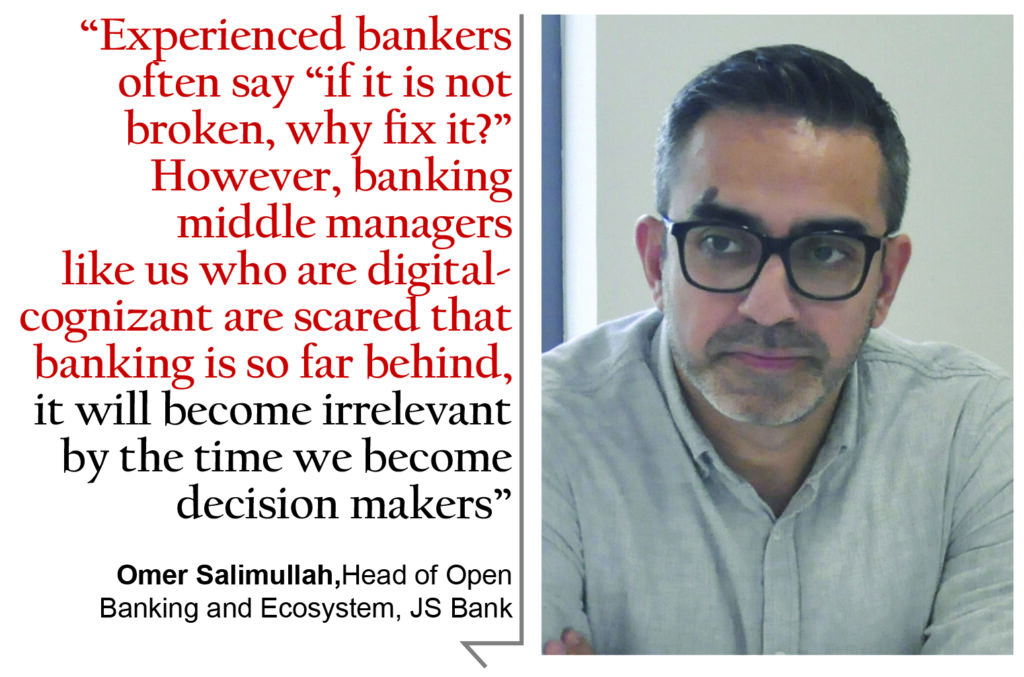
AT: The game is all about customers. We only have 20% of the population as customers. We need to onboard customers. To do that, we need to go to customers. For that, we need data. Banks need to accept the fundamental nature of data. The reality is we have a lot of data. We need to be confident in the trust and credibility banks have, and focus on financial inclusion for the rest of the country. If we want to stay relevant, we need to know our customers better. We have enough data to know them. We can then identify needs, address them. So be less instinctive and more data curious. My smartphone gives me 16,000 data points. I need just 8 to 10 to do credit-worthiness. I can do basic banking business by just being data curious.
KJ: I would do the most basic things first, and then talk about digitization. Do the basics first, then partner with fintechs. Open up your infrastructure. Invest in fintechs. Let them innovate on your behalf. Right now banks take four months to two years to launch a digital product. We need fintechs!
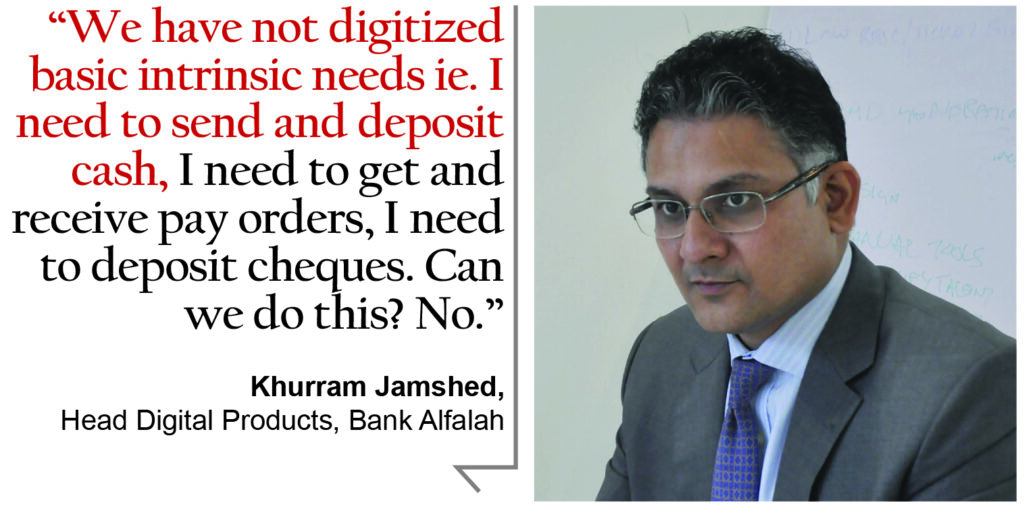
OS: You cannot have the old school vet the new school and set the rules. They will take the agility out of it.
Profit: According to some estimates, banks are spending over a quarter of a billion dollars a year on technology. A lot of this goes on operational expenses related to legacy technology. Can we spend this money better? What would you like it spent on?
OS: Every board needs to ask “what is your IT cost and relation to efficiencies?” IT budgets are increasing, but efficiencies are not. Why are we not having this conversation?
AT: You will be surprised, but often the biggest technology cost is people, not even technology itself. We need to move to cloud somehow, which will address this.
KJ: We do not have electricity grids to make high end data centers. I would invest some of that money on the right people who get disruptive technologies. We try to get MBAs to do tech and critical digital enablement work.
AT: I second that. We spend money on very expensive consultants, that we should be spending on training our people.
Profit: How can digital banking help with financial inclusion in Pakistan?
KJ: Digital is not the answer for everything, but it can help. The government needs to enforce a digital economy. That will is needed. The government needs to lead here. Banks can’t do it if the government doesn’t want to do it.
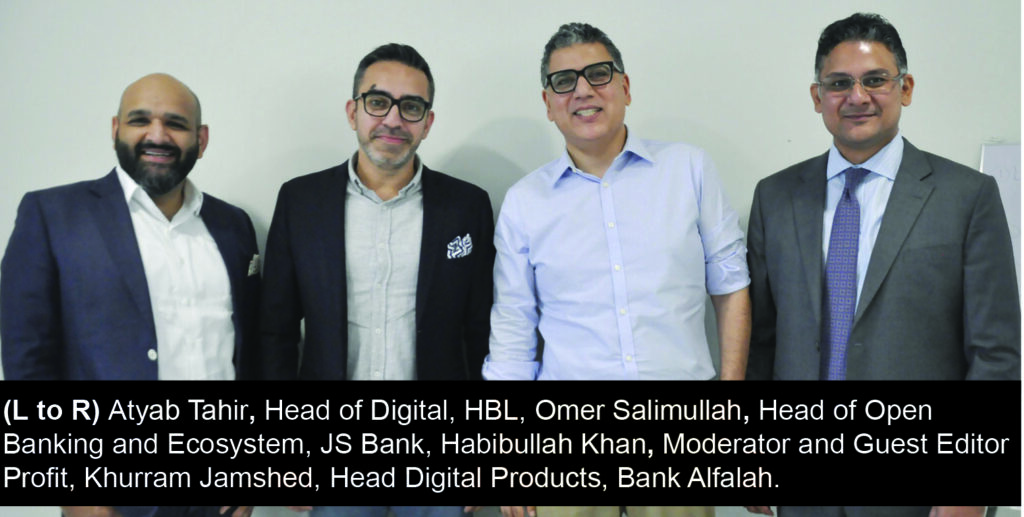
AT: Microfinance banks, institutions and small-to-medium enterprises banks are all involved in the ecosystem. Mobile operators are also focused on the demographic right above the bottom of the pyramid. The role for digital is in education. You need to educate people so that they go to microfinance institution and then to microfinance banks, etc. That way, you can get data about them and then continue to help them. The key is to educate, and take that first deposit. We have to look at the entire financial value chain for the bottom of the pyramid and see where digital can add value and where various players can add value. It can be done.
OS: The bottom of the pyramid is currently too much of a hassle for banks. The answer is to make it easier for fintechs to do it. Fix a rail, like UPI in India, and you will get people who will take the risk. The sheer volume and data will help justify their business models to investors.
KJ: I passionately believe if we simply do banking digitally well, it will solve a lot of the financial inclusion problem, because it will make onboarding and fulfillment easy, cost-effective and seamless.
This roundtable was conducted and moderated for Profit by Habibullah Khan, Director of Content at Penumbra.




















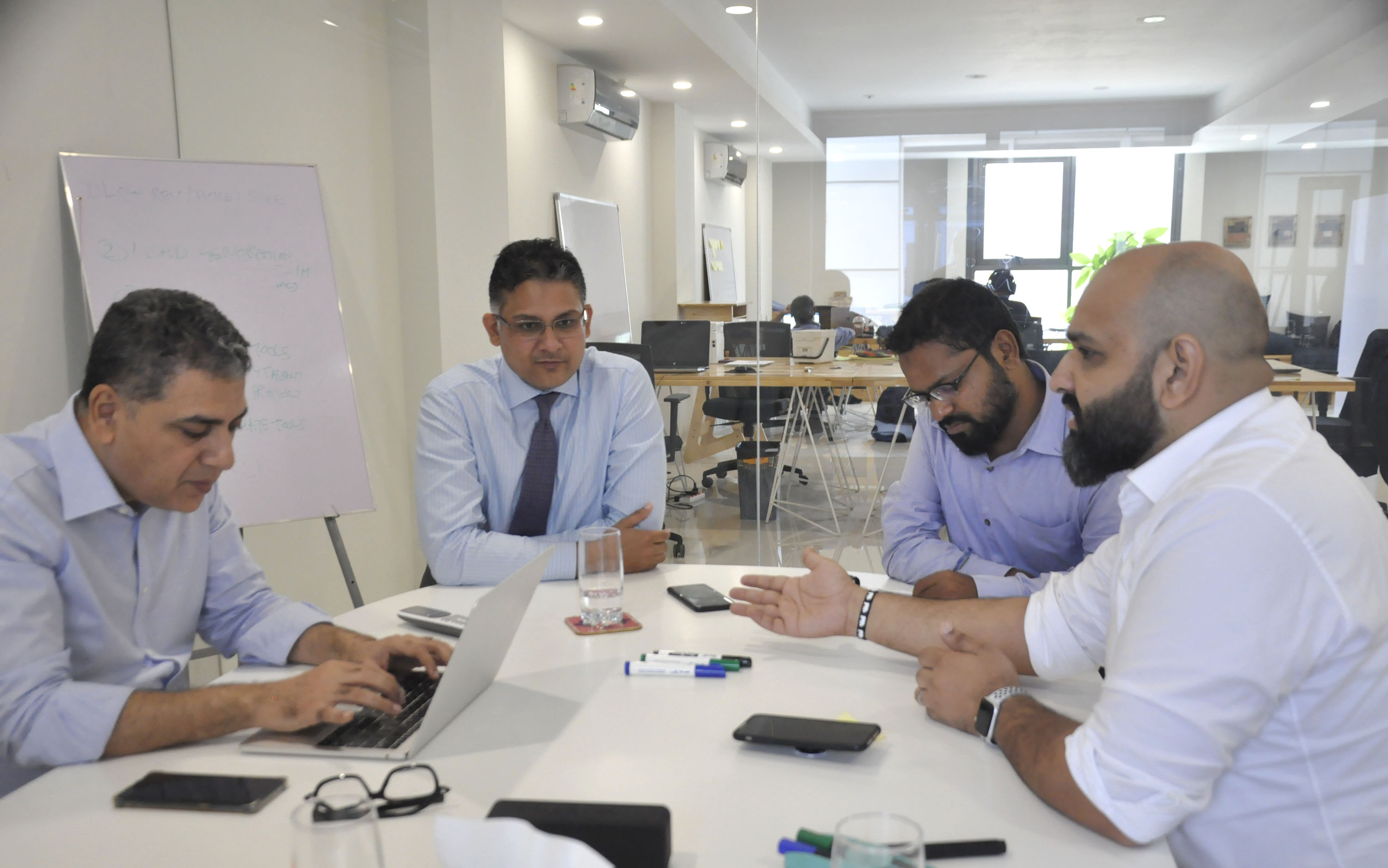
Very informative. Thank you!
Haha not one mention of bitcoin. I guess it’s the elephant in the room that no one wants to talk about.
Fantastic interview! Although I think people should be more forthcoming about the exact nature of the roadblocks in their way, we’ve been losing great ideas to risk-averse, ageist management for eons.
Comments are closed.